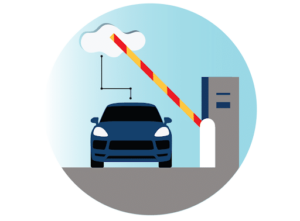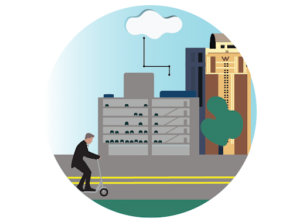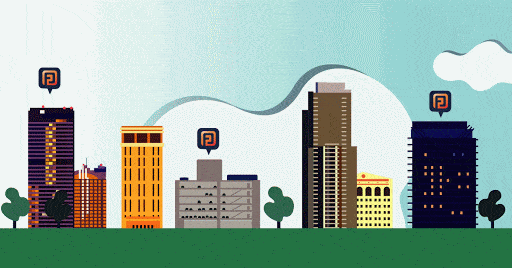It wasn’t long ago that the process of paying for things was an established routine. Perhaps you began your day by inserting your debit card into a cash machine, punching the touch screen buttons, and pocketing the dispensed stack of gently-used bills. Later that night, after a dinner with friends, you’d all pool your cards together for the server to split your tab. You’d sign the receipt with a borrowed pen and merrily go about your evening.
Remember when you did all of these things without a single thought about where you would get your next pump of hand sanitizer?
In the U.S., cash and cards have been the go-to standards for years, while touchless payment systems were only just starting to creep into consumer consciousness. Overnight, the pandemic accelerated consumers’ level of interest in touchless transactions from a casual curiosity to a desired safety measure. According to a 2020 Mastercard Consumer Survey, 51% of Americans are now using some form of contactless payment. Parking garages and lot operators who want to meet consumer demands have to adapt to those expectations. What do drivers expect? To pay for parking services safely, frictionlessly, and touchlessly.
What Is Touchless Parking?

Systems like FlashVision, FlashMotion, and FlashBeacon provide an ideal customer experience. A car drives through the entry point of a lot and parks. At some point, the driver retrieves their car and drives back out. Whether they’re on a monthly parking plan, in town for a few days, or just stopping for a few hours at an event, the system charges the driver the appropriate amount. The driver’s phone buzzes with an app alert for the transaction or receives an email with the details later.
Technology like the kind provided in FlashVision eliminates the need to stop at a gate. FlashBeacon saves drivers from having to fish a ticket out of a machine or fumbling with reinserting that ticket when they leave. An ecosystem of connected mobile apps puts an end to the dance of removing one’s wallet out of their pocket or a card from their bag in the floorboard of the passenger seat. Drivers don’t even have to roll down the window. It is an effortless transaction, and the payment is merely an afterthought.
Obviously, for this idealized scenario, a few elements have to be in place beforehand. However, this kind of simplicity is much more attainable than you likely expect. The technology that enables this use case, and multiple frictionless scenarios like it, is available right now—and your customers are looking for it.
Is Touchless Parking More Profitable?

In a word: Yes.
Even before the pandemic, consumers were getting accostomed with mobile and wireless transactions. Restaurants that depended on take-out and delivery began consolidating phone support in favor of apps and online ordering. Innovative retailers were eradicating the checkout process altogether. In a recent report, cashless transactions, tokenized wallets, and an explosion of digital checkouts are three of the eight ways the pandemic will impact businesses.
When a company delivers on the promise of a good experience, it translates to repeat business from the customer and word-of-mouth advocacy among that consumer’s peers.
Beyond the reports and the technology, consumers are drawn to businesses that offer modern conveniences and seamless transactions. When a company delivers on the promise of a good experience, it translates to repeat business from the customer and word-of-mouth advocacy among that consumer’s peers.
For parking operation owners and operators, it’s possible to provide positive, safe, and connected transactions as part of an automated parking process.
FlashParking Is The New Standard For Smart Parking
If consumers want fully contactless payment, you should have the ability to provide it to them—in whatever form they want. The necessary tech is ready to be deployed.
Automatic vehicle identification (AVI) and license plate recognition (LPR) are two technologies that enable fully touchless, frictionless user experiences. Both technologies identify a customer’s car, either via a tag like TransCore or TagMaster, or by reading the license plate at entry and exit. The car window stays up. The driver simply drives in and out as they please.
At the next level, there are multiple alternative touchless solutions that allow drivers to pay remotely. FlashBeacon, eParking Solutions, and other garage technologies give drivers the option to enter and exit your facility using only their mobile phones. Either by checking in on an application like FlashBeacon or checking in and out using an ecosystem of partner apps, drivers can come and go, pay instantly, and never need to roll down their window.
There is also a range of minimal-contact options. FlashMotion removes the push-button ticket delivery. Instead, drivers wave over a sensor to gain a ticket. Meanwhile, the checkout kiosks can be upgraded with near field communication (NFC) sensors to accept NFC credit cards, ApplePay, and Google Pay.
Smart Parking Is Part of The Smart City Solution
Why is frictionless parking important for a smart city? First and foremost, our largest cities are out of room for traditional infrastructure expansion. Roads and train tracks cannot be widened any further. Roadway slowdowns caused by double-parking, excessive street-side parking, and cars waiting in line for entry into a parking garage take a significant toll on roadway congestion.
In a smarter future, we see drivers interacting with parking facilities with perfect ease. A driver knows that a spot is waiting for them before they drive through the entryway. That eliminates slow-moving cars looking for street-side parking or a lot that isn’t full.
Touchless payment is just one part of making sure drivers are using roadways and parking places efficiently. To find out more about integrating touchless payment solutions, get in touch with us here.

